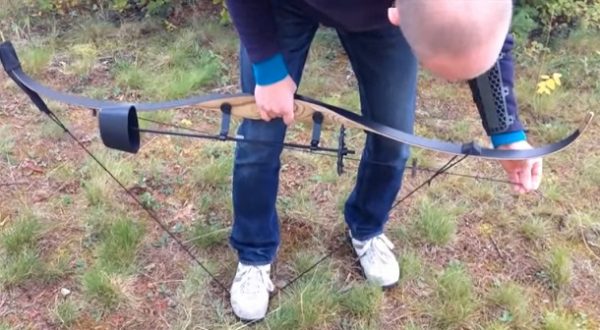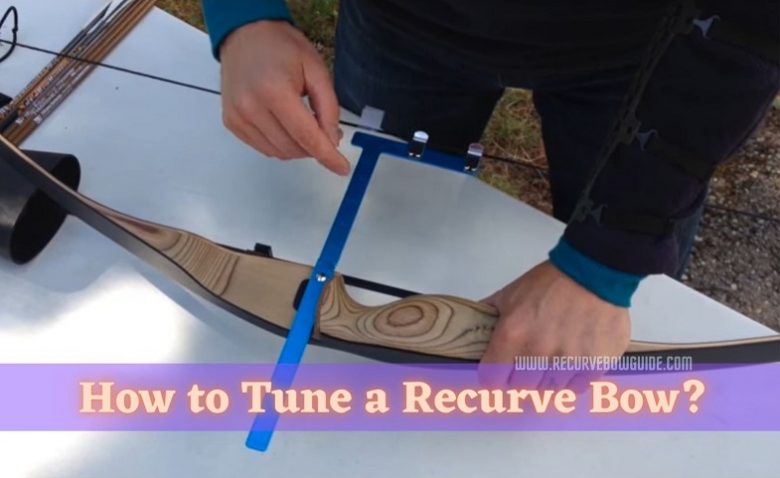When I was learning archery, I didn’t know you could tune your bows. My knowledge about archery was that you perfect your form, stance and just practice shooting.
While understanding afterward that it wasn’t that wrong, however, I was still pretty confused by the idea of “tuning” your recurve bow. Safe to say that the step to perfecting your shooting sequence through tuning tests or learning how to tune a recurve bow was a truly fascinating phase of my learning.
Day by day, you still continue to learn so much about archery and yourself as an archer through tuning. It can be a long process, but it is 100 percent worth it. So if you are ready for it, then continue reading ahead.
Recurve Bow Tuning Guide:
Tuning your bow properly depends entirely on you. Once you have perfected your form, bracing height, learn how to place the arrow rest, nock or nocking point, sight and tuning a recurve bow plunger button (if using), and stabilizers, without mistakes every time, you should be prepared to start the tuning tests.
Before You Get Started:
To tune your bow, you need to understand where you are most and least consistent. Since tuning is all about practicing and perfecting your recurve bow setup and sequence, this is the most important task for you to get started.
So start by marking all the arrows you will be using to practice by numbers. This way, you can track which arrow goes in what direction and find if anything might be wrong with the arrow and not how you are shooting to save time.
Once you think you have perfected your shooting sequence, you can test yourself out by doing a 300 round shooting at 18 meters. If your score is 285 or above, you are ready!
After passing the 300 round test, you can now follow the tests to tune recurve bow. You don’t need to use any recurve bow tuning tools. Make sure your bowstring fit is not too tight.
1. 6’ Test
This test was developed in the early 1960s by Max Hamilton. He was looking to find a way you can improve your flight consistency and accuracy in archery.
It is one of the first methods of tuning, and this is how you do it:
- Take three arrows.
- Stand 3 ½ meters away from the target matt.
- Shoot the arrow one by one and observe the feather end of the arrow and its direction and position after it hits the target mat.
After shooting each arrow, if you find the fletch or feather end is:
- Low in respect to the shaft of the arrow; then, you need to raise your nocking point.
- High in respect to the shaft of the arrow; then, you need to lower your nocking point.
On the other hand, if you find it is to the:
- Right; then your arrow spine is stiff.
You can get lighter feathers or fletching, increase the arrow point’s weight, increase the bow’s weight, or get a longer arrow to fix the issue.
- Left; then your arrow spine is weak.
You can get heavier feathers or fletching, decrease the arrow point’s weight, decrease the bow’s weight, or get a shorter arrow to fix the issue.
If all these don’t change the problem for you and the arrow fletch still continues to be unstable, then the problem might be in your arrow’s spine that isn’t suitable for your bow’s weight, and you need another arrow size.

2. Paper Tuning/Paper Test
Following Max Hamilton’s 6′ test, this is an improvised version of that. Since in the 6′ test, the arrows hitting the target matt showed a few inconsistencies making that test not so accurate. So here is the method to paper tuning a recurve bow:
- Set your target matt and place a butcher paper just 3 to 6 feet in front of the matt.
- Stand about 4 ½ meters away facing the butcher paper.
- From shoulder height, shoot three arrows one by one.
If you see the butcher paper shows:
- Three sides of the arrow’s fletch forming a triangle and no other tear except in the middle; then it is a good arrow flight.
But if the arrow shows:
- A long tear with the point impact downwards, then you need to lower your nocking point.
- A long tear with the point impact upwards, then you need a higher nocking point.
The solution for both the vertical tears is for you to change your recurve nocking point.
Similarly, if there is a long tear, and the point impact is on the:
- Left; then, the arrow is stiff for right-handed archers and weak for left-handed archers.
- Right; then, the arrow is weak for right-handed archers and stiff for left-handed archers.
Here, the solution for both the horizontal tears is for you to change the weight of the feather ends, change the bow’s weight, or change the length of your arrow like the previous test.
3. Bare Shaft Test
For tuning recurve bows, this is one of the most preferred methods because it is highly accurate. You need bare shafts for this or an arrow without the fletched or feathered end. Since the bare shaft doesn’t get affected by weight due to the lack of fletches, it is a good indicator for your nocking point.
- Stand about 4 to 5 meters distance away facing the target matt.
- Take 3 to 4 arrows at once and shoot them in a group to any spot on the target matt.
- Now take a bare shaft and shoot it on the same spot where you shoot the previous arrows.
Observe the impact area or the pointed end of the arrow and not the fletched end. If your bare shaft is:
- Higher on the target from your fletched arrow group, then you need to lower your nocking point.
- Lower on the target from your fletched arrow group, then you need to raise your nocking point.
As for right-handed archers, if the bare shaft is on the:
- Right from the fletched arrow group, then your arrow is weak. You can try to lower your bow’s weight, get a shorter arrow or arrow with a stiffer spine to fix it.
- Left from the fletched arrow group, then the arrow is stiff. You can try to increase the bow’s weight, get a longer arrow or try a different arrow.
As for left-handed archers, if the bare shaft is on the:
- Right from the fletched arrow group, then your arrow is stiff. You can try a longer arrow, increase the bow’s weight, or get a different arrow.
- Left from the fletched arrow group, then your arrow is weak. You can try shooting a shorter arrow, decrease the bow’s weight or try a stiffer arrow.
Final Words:
Now you know how to tune a recurve bow, and you can try the tuning tests out yourself. Try one of the tests out and keep repeating it till you get the desired result consistently or have tuned your recurve bow.
